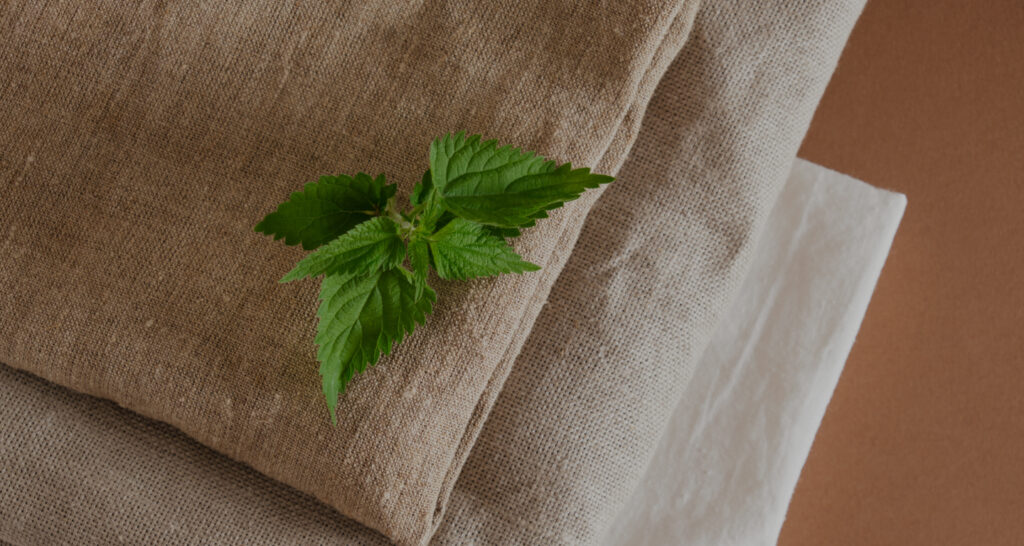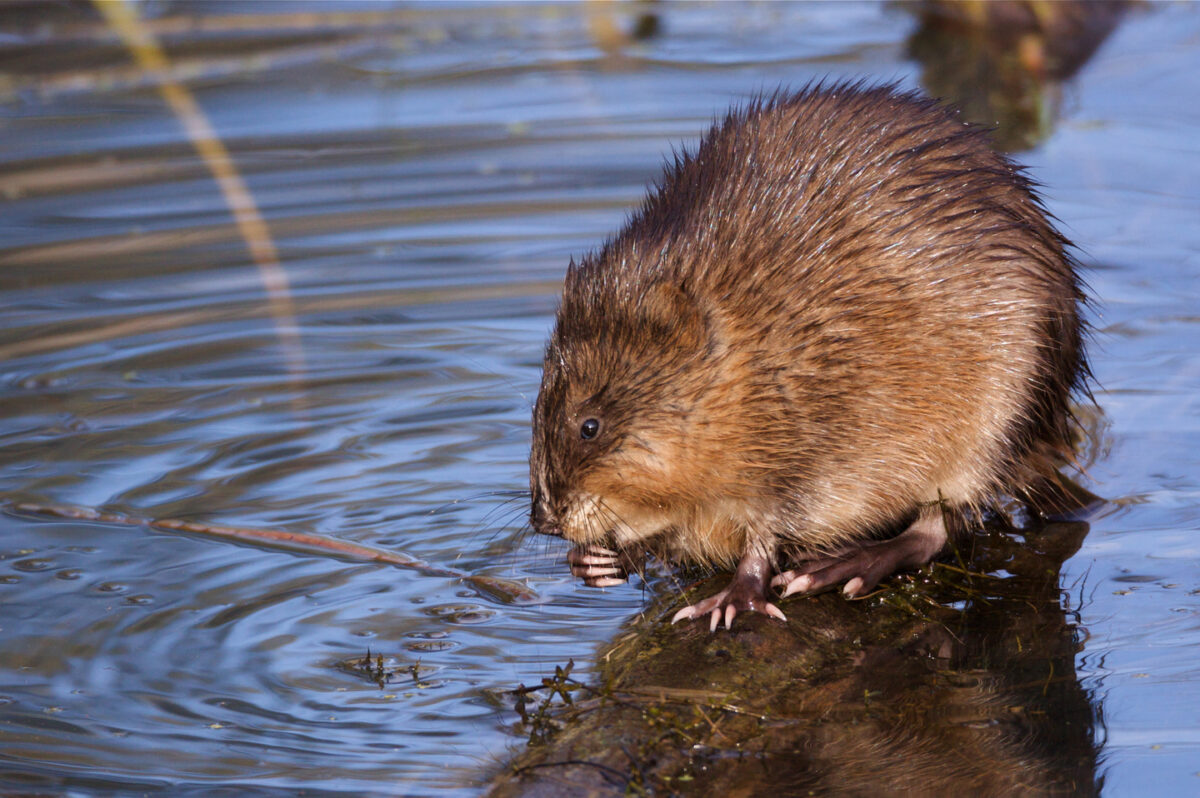
Nettle Fibres
Botanical information
- The stinging nettles or nettle belong to the family of Urticaceae – a nettle family.
- The two most common nettle species are Urtica Dioica L. and Urtica Urens.
- The Latin verb urere, signifying ‘to burn,’ is the origin of the genus name Urtica, referencing the plant’s stinging hairs. The species name dioica, meaning ‘two houses,’ reflects the typical presence of either male or female flowers in the plant.
- The term “Nettle” might have its roots in the Anglo-Saxon term “noedl,” meaning needle, while “Urtica” is derived from the Latin word for “to burn.”
- It is a herbaceous nitrophilous (plant preferring nitrogen rich soil) perennial plant which belongs to the class of Magnoliopsida – dicotyledons.
- In the early 20th century, Germans discovered that a combination of nettle and 10 % cotton produced high-quality fabric used for underclothes, stockings, and tarps. Also, the fishing nets were made with the nettle twines.
- The traditional nettle fibre craft flourishes notably among the Bhotiya community in Uttarakhand, India.
Agroclimatic Conditions for Cultivation
- Nettle plants generally undergo an annual growth cycle, initiating from July to August and becoming ready for collection between October and January.
- This widely distributed wild plant can grow in tropical and temperate zones but only in areas with high annual rainfall.
- Nettle grows in a broad range of habitats such as swamps, shrubberies, meadows, habitats near riverbanks, wastelands, floodplains, etc.
- It usually prefers soil rich in nutrients and nitrogen content, moist in texture. It can grow in full sun-light but likes it best in semi- shades.
- It is commonly found at altitudes ranging from 300 – 2800 meters above sea level.
- This wild plant is widely spread in the regions of Northern Europe, Northern America and Asia and is less available in Southern Europe and Northern African regions[2].
- A Himalayan nettle species, Girardinia Diversifolia is abundantly present in the Himalayan region(India) right from Uttarakhand to Sikkim. It is also found in other Asian countries such as Nepal, Bhutan, China, Indonesia, Korea, Malaysia, Sri Lanka, and some parts of the African continent .
- According to preliminary surveys conducted by the Uttarakhand Bamboo and Fiber Development Board and non-governmental organisations such as the Himmothan Society, it has been discovered that three blocks in Chamoli district, Uttarakhand, encompass approximately 770 sq.km of naturally occurring Himalayan nettle, Girardinia diversifolia(2023).
- This vigorously growing species has the potential to produce an annual yield of 24,704.26 tons of raw dried fibre.
Table 1. Physical & mechanical properties and chemical composition of areca nut fibres
Physical & Mechanical properties
Length
50mm-750mm
Diameter
19.9 µm
Moisture content
12.3%
Breaking extension
2.0-2.5%
Average stiffness
65-87 GPa
Tensile strength
740-1594 MPa
Chemical Composition
Details
European sp.
Indian sp.
Cellulose
67%
90%
Hemicellulose
8%
–
Lignin
4%
–
Moisture
11%
7%
Ash
3%
1.5%
Vernacular names for Himalayan Nettle[3]
Bichchhoo – Hindi,
Indian stinging nettle – English,
Bhangre sisnu and Allo sisnu – Nepali, and
Kuju – Lepcha community, Sikkim
Chart 2
Features
- Nettle fibres offer sustainable, environmentally friendly, and biodegradable option for textile production.
- Additionally, its manufacturing process requires less energy consumption.
- It has minimum requirements for pesticides and fertilizers .
- It proliferates in diverse climates and supports the local biodiversity.
- Traditional fibre processing results in supple and pliable fibres ideal for fine textiles. Furthermore, the wastewater generated in this process releases natural pigment from the fibre which can serve as a natural source of colorants, effectively dyeing cotton, and wool in a range of hues, from beige to green, depending on the mordant applied
- Nettle plant has the ability to improve soils overloaded with nitrates and phosphates, as it is a nitrophilous herbaceous plant .
- It can be cultivated on land unsuitable for food production, including contaminated areas.
- Stinging nettles are adorned with trichomes, which are hairs found on the leaves and stems. These trichomes consist of short, simple hairs on the leaves and longer, stinging rigid hairs .
- It possesses twice the stiffness and strength of hemp, yet its elongation is comparable to hemp and superior to flax.
- It is also resilient to pests and diseases.
- It presents economic and ecological benefits by producing top quality fibres and food in one harvest.
- Stinging nettle possesses antiproliferative, anti-inflammatory, antioxidant, analgesic, anti-infectious, hypotensive, and antiulcer properties across all its plant parts, including leaves, stems, roots, and seeds. Additionally, it exhibits the capacity to prevent cardiovascular disease.
Extraction and processing of fibres
Cultivation of nettle plants – Two types of nettle varieties are grown specifically for producing fibres suitable for textile use, namely European nettle – Urtica dioica and Himalayan nettle – Girardinia Diversifolia, while the remaining varieties also contain fibres utilized for different purposes.
Harvest – Depending on the time of harvest and the type of nettle species, harvesting is done either manually or mechanically.
Retting – It is a process done to separate the fibre bundles from the lignin present in the stem. Traditionally, dew/field retting or water retting is performed.
Decortication –Generally, there are two ways to perform decortication, which is manually, i.e. removing the bast/bark from the inner core, and by machine decortication, e.g. by crushing, breaking unit, or hammer mill.
Separation of the fibre bundles – In this process, each fibre is extracted through simple methods, such as boiling them in water or introducing chemicals or enzymes to accelerate the separation. Mechanical processes like scutching, comb shaking, or step cleaning are also used.
Refining – This step determines the ultimate use of these fibres whether they will be used as relatively coarse fibre bundles (as seen in needle felts) or as fine fibre bundles or single fibres for spinning (utilized in processes like spinning wheels or cotton spinning machinery). The refining methods range from cooking, beating, or hackling to carding.
Typical uses
- Nettle has been used for food, medicinal use, and fibres since medieval times.
- Its young leaves are suitable for preparing curries, herb soups, and tangy soups. The root of the stinging nettle is utilized to alleviate urinary challenges associated with benign prostatic hyperplasia, while its leaves are employed to manage conditions like arthritis, rheumatism, and allergic rhinitis.
- Archaeological findings state that, in Bronze age (3000-2000 BC) burial shrouds were found which were made up of nettle fabrics in Denmark.
- During World War I, the captured German uniforms were found to be made up of 85% of nettle fibres.
- Native Americans and Europeans utilized fibres obtained from Stinging Nettle to craft sailcloth, sacks, ropes, and fishing nets.
- In the textile sector, nettle is used to make clothes, give anti-bacterial finishing to textiles, make bio-based composites, and make carbon nanosheets .
- In agriculture, extract of all parts of plant is used as a bio stimulant/ growth promoter (substances used to improve plant growth). Further, the plant is used to make green manure, or as a plant-based fertilizer .
- Stinging nettle enhances the reproductive performance of fish, presenting it as a cost-effective option for pisciculture.
- It can be used as reinforcement materials in polymer composites for application in construction and automobile industries.
- Nettle fibres have the potential to serve as an alternative to glass fibres, particularly in the production of composites for the automotive industry.
- These potential fibres could also replace asbestos fibres, with nettle fibres offering advantages over flax fibres.
- By combining nettle with cotton or bamboo in varying proportions, one can create fabrics suitable for a range of applications, including home textiles, fibre composites, and handmade goods.
- Nettle fibre can be blended with various other fibres, including wool, cotton, flax, ramie, and viscose.
Use of nettle fibres in different villages and tribal regions in India
Various handcrafted goods are prepared by local artisans in Uttarakhand, India, through traditional methods, and these crafts are emerging as employment-generation activities for the local crowd.
Maheshwari Khati, a proficient artisan from Bhimtala in Chamoli District, Uttarakhand, oversees a weaving centre specialising in handloom products. She creates products from wool as well as nettle, and also makes carpets.
The Lepchas, the indigenous people of Sikkim, possess notable technical expertise regarding the nettle plant and have utilized it as a source of fibre for crafting clothing and accessories, the details of which are as follows:
- They use a traditional method to extract and soften the fibres, starting with harvesting semi-matured stems.
- The process involves peeling and drying the stems until they become brittle and can be worked with.
- To enhance the softness of the fibres, they undergo treatment with local white soil and are subsequently dried again.
- A degumming process is initiated by boiling the bark with soap or wood ash.
- Following this, the fibres undergo treatment with a wooden paddle to eliminate any residual bark before being spun into yarn and transformed into fabric.
- The nettle yarn is then utilized to craft various products such as bags, shawls, and stoles.
Based on above, it is remarked that Lepcha community’s creations can be enriched by blending nettle fibres with other fibres such as cotton, sunn hemp, angora, or yak hair which can result in a diverse range of textiles using nettle.
Training provided by Nepalese women to Lepcha community has revitalized the craft, bringing in new designs and eco-friendly extraction methods. This initiative has generated additional income for women who sell popular nettle bags and hats as souvenirs to tourists in Sikkim.
Promoting these diversified products as handicrafts from the Lepcha community can tap into the region’s thriving tourism industry, leading to socio-economic benefits for the local communities involved in producing these handicrafts.

















